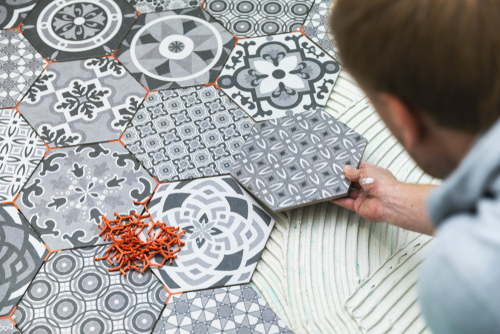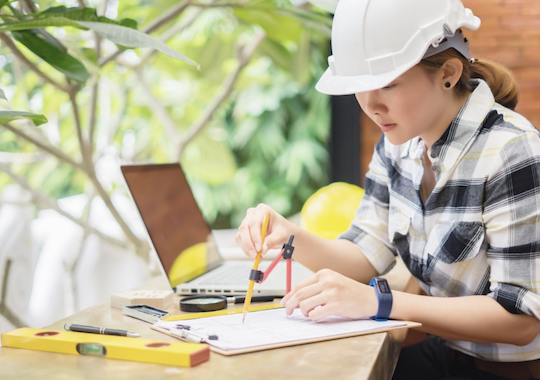A floor is so much more than the flat surface that you walk on every day. Walls are so much more than a painted backdrop to your living and office spaces. Both walls and floors are essential aspects of daily living, yet are often largely ignored as we proceed about our daily lives. Such is human nature, that something which is an essential part of our lives becomes somewhat invisible to us. We only really notice something when it fails us or causes us inconvenience and annoyance. What, then, do we do if we want to draw attention to our immediate interior and exterior surroundings and make sure that they stand out?

Tiles add that extra dimension to your surrounds
One way of drawing attention to our floors and walls is through artfully crafted tiled patterns which have high impact on the visual senses whilst also being extremely durable, functional and easier to clean than carpets or wooden flooring. Tiles add an element of texture to otherwise plain floors and walls and come in a wide range of sizes, colours, shapes and materials. You only have to walk into a tile warehouse to see the vast selection available to you for both walls and floors. Whether you are tiling a bathroom or an outer courtyard, there is a perfect tile for your needs.
Tiles have been around for thousands of years. They just keep improving …
But why tiles? They are certainly not a new innovation. They have been produced since the time of the pyramids in Egypt – around 10 000 BCE. Babylon, Assyria and the ancient Persian Empire then began creating tiles, followed by the Greeks and Romans who developed beautiful mosaics which were used on the walls and floors of temples, bath houses and luxury villas. Around 206 BCE, the Chinese introduced a new element to tiles with the creation of porcelain. Originally, tiles were made from terracotta (literally “baked earth”), which is simply shaped and flattened clay dried by the sun and, later, in ovens. The Egyptians, as we all know, used stone tiles made from granite, travertine and limestone on which they carved a written record of their history. It is widely believed that white polished limestone tiles were used on the outer surface of the Great Pyramid as these were highly reflective and the pyramid was consequently able to be seen from great distances. Polished limestone is still one of the most popular tiles in use today.
Smooth and glossy or textured surface – think carefully before you decide
Tiles, of course, come in all sizes and shapes, from square to rectangular, circular and various geometric patterns. Because of this, many different patterns can be created by combining various shapes, sizes and colours, which gives you endless possibilities when it comes to design. The surface of a tile can be either smooth or textured, adding yet another level of depth to any design. Textured tiles are, of course, a great choice for areas such as patios, bathroom floors, swimming pool surrounds, outside stairways and walkways, due to their slip resistance. In a monochromatic colour scheme, textured tiles add a level of interest which has nothing to do with colour and everything to do with appearance.
Express your ‘inner self’ through your decorating choices
Your home environment should be a place where you feel safe and totally comfortable. Whether you are an extrovert or an introvert, this will reflect in your decorating style. Bright colours and bold patterns are often associated with extroverted, creative people but could also be true of quieter individuals who express themselves through external displays. You might be surprised to find a brightly coloured and extravagantly patterned courtyard in the home of an outwardly reserved person who loves colour and an element of chaos in their decorating style but cannot express this through clothing. Small tiles, especially mosaics, are a wonderfully creative way of adding colour and texture to any scheme and, when used judiciously, can add a subtle hint of colour to break up an otherwise neutral-coloured tiled bathroom. A slim border of contrasting tiles around a basin, bath or shower will add a hint of colour which can be accented with matching towels and bathmats. With the latest waterjet cutting technology now being used, tiles can be cut into incredibly intricate pieces which can form almost any pattern required, even the most complex designs.
ALWAYS call in the specialists to get the job done right
There is no doubt that both wall and floor tiles have cemented their place in architecture and both interior and exterior decoration. As tiles have steadily evolved from being extremely simple and serviceable slabs into statement features which add both luxury, colour, functionality and beauty to our surrounds, they have also needed more specialised and knowledgeable artisans to lay them correctly. Tiles which are incorrectly laid look unsightly, crack, chip and break more easily, and if not 100% aligned and level with one another, pose a trip hazard, especially for older persons and children. You may think that you are skilled enough to tackle the job yourself, but if you are simply an enthusiastic amateur, chances are that something will inevitably go wrong. It is always best, particularly if you have bought expensive tiles and are already well into the cost pit involved in retiling or laying tiles on a previously untiled surface, to stretch the finances a little more and use the services of an expert tiling specialist to do the job. Professionally, well-laid tiles will stand up to years of use without problems. For further information and tips and to find the right tiling specialist for your needs, have a look through Uptasker’s listings.

